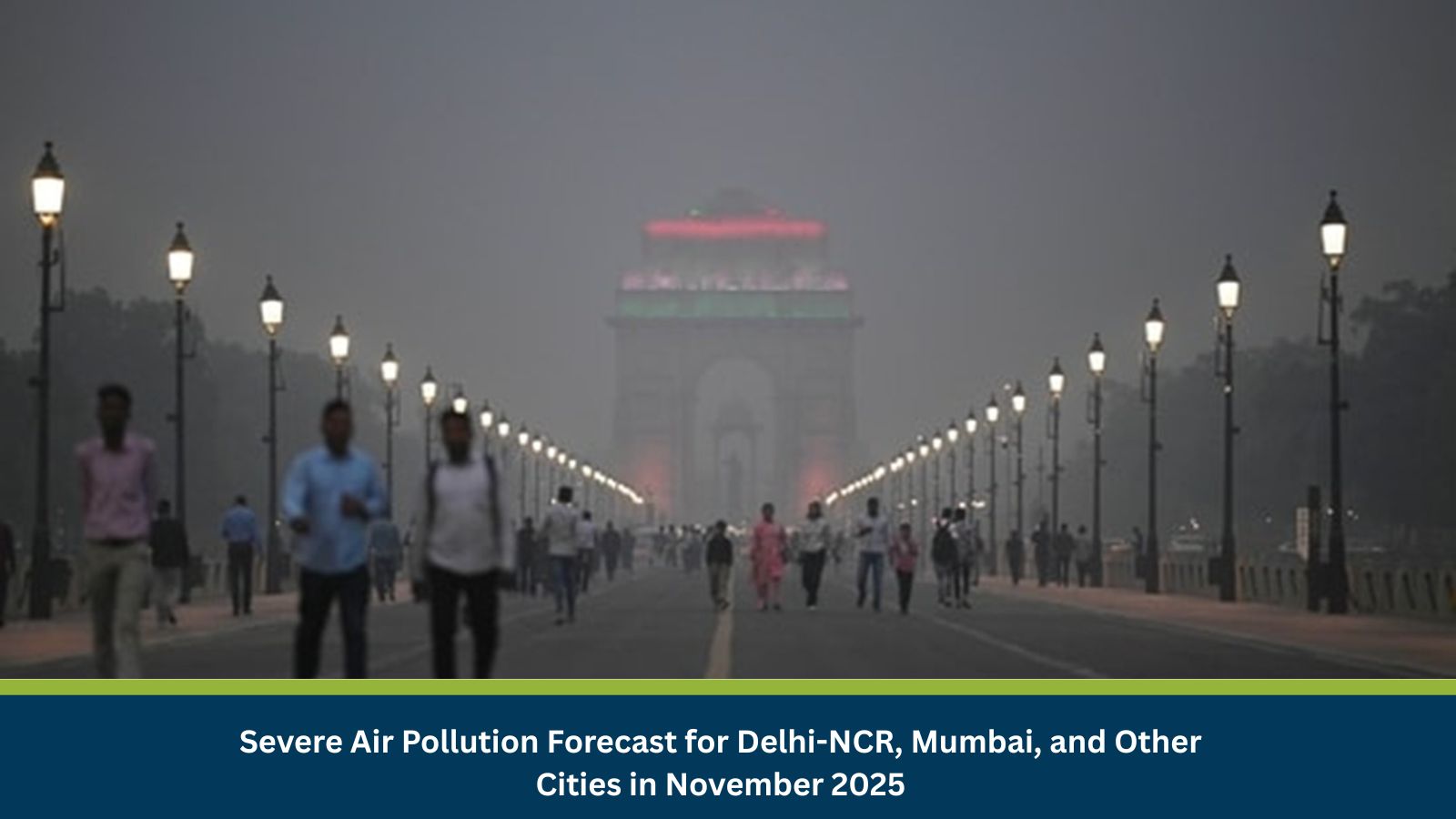Delhi-NCR Air Pollution Crisis – November 2025 Outlook
The Delhi-NCR Air Pollution Crisis is once again set to intensify as major Indian cities including Delhi-National Capital Region (NCR), Mumbai, Kolkata, and Bengaluru brace for another severe pollution season in November 2025. Forecasts from the Air Quality Early Warning System (AQEWS) and the Central Pollution Control Board (CPCB) indicate that Delhi’s air quality could deteriorate from the “very poor” to “severe” category by early November as wind speeds fall and stubble burning in Punjab and Haryana increases.
From 21 October 2025, Delhi’s daily Air Quality Index (AQI) has already crossed 400 in several areas, marking the early onset of the Delhi-NCR Air Pollution Crisis. This spike has been triggered by a combination of post-monsoon weather stagnation, Diwali fireworks, vehicular emissions, and increasing crop residue burning across Northern India. The India Meteorological Department (IMD) has warned that cooler nights and calm winds will trap pollutants near the surface, exacerbating smog formation across the Indo-Gangetic plains.
Regional Impact – Delhi, Mumbai, and Beyond
Beyond the national capital, Mumbai which typically records moderate air quality is also expected to experience worsening conditions. Rising construction dust, industrial emissions, and stagnant wind movement along the Thane–Belapur industrial belt are projected to elevate PM2.5 levels substantially.
Health departments in Delhi and Mumbai have already issued public health advisories, warning of respiratory distress and recommending that children, the elderly, and individuals with heart or lung ailments limit outdoor exposure. The Delhi-NCR Air Pollution Crisis continues to pose a serious public health challenge, especially for vulnerable populations during the first two weeks of November, which historically mark the most polluted period of the year.
During this period, Delhi’s stubble-burning share in overall PM2.5 concentration could rise to nearly 40 percent, coinciding with festive activities and poor atmospheric dispersion.
Policy Response and Challenges
Authorities have implemented the Graded Response Action Plan (GRAP) Stage II measures to manage the Delhi-NCR Air Pollution Crisis, including restrictions on construction and demolition activities. However, these temporary interventions are widely considered insufficient without sustained regional coordination, particularly across Punjab, Haryana, Uttar Pradesh, and Delhi.
Experts note that while emergency controls may temporarily reduce local emissions, long-term enforcement and inter-state cooperation are essential to prevent a seasonal recurrence of pollution spikes.
Broader Consequences and Urban Disruptions
As pollution levels rise, thick layers of toxic smog are expected to periodically blanket the Delhi-NCR Air Pollution Crisis zone, as well as nearby cities in North India. This could lead to flight delays, rail speed restrictions, and road accidents caused by low visibility and dense smog conditions.
Stay Ahead of Threats with Datasurfr Predict
MitKat’s Datasurfr Predict delivers accurate, real-time, and contextualised data to help organisations respond swiftly to physical, environmental, and cyber threats.
With Sam AI, our AI Agent not only provides context for unfolding events but also analyses vetted historical data to forecast how events are likely to evolve and their potential impact using industry and location-specific probabilistic scores. Book a free demo today and see how Datasurfr Predict can transform your risk preparedness.






